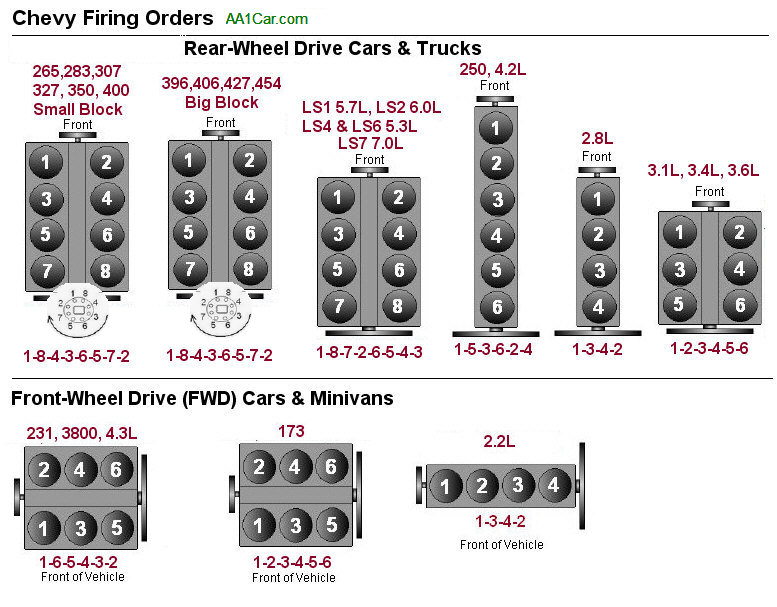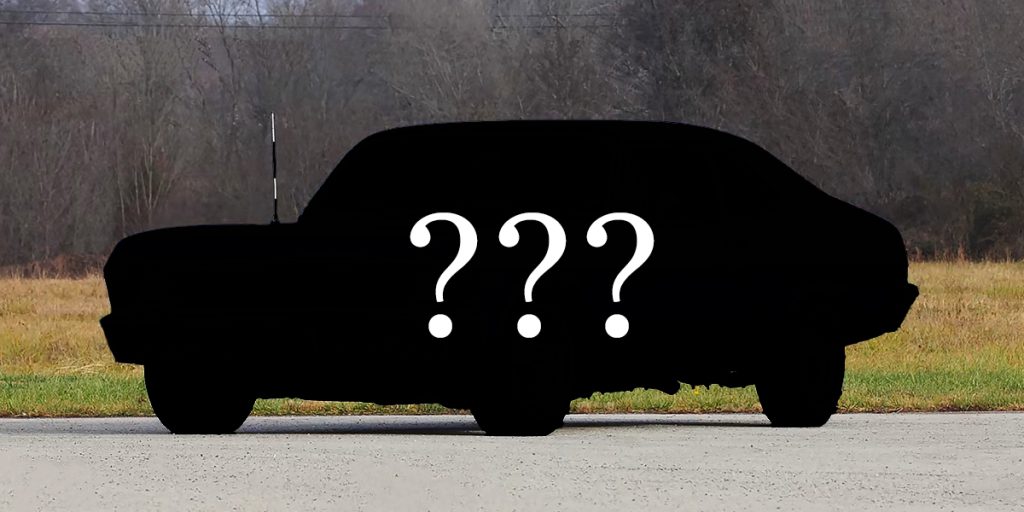Understanding Engine Ignition Firing Order: A Comprehensive Guide for Chevrolet Inline Six, Small Block, Big Block, and LS Engines
The unsung hero of any Chevrolet engine, one of the critical aspects that ensures smooth operation and optimal performance, is the ignition firing order. Whether you’re dealing with the classic inline six, the versatile small block, the powerful big block, or the modern LS engines, the firing order plays an important role in how the engine performs.
What is an Engine Ignition Firing Order?
The ignition firing order is the sequence in which the spark plugs in an engine ignite the fuel-air mixture in the cylinders. This sequence is crucial for balancing the engine, reducing vibrations, and ensuring efficient combustion. A correct firing order leads to smooth engine operation, while an incorrect one can cause severe damage, including misfires, engine knocking, and even catastrophic failure.
Another factor with ignition is cooling. Offsetting the firing cylinders allows the water to cool more efficiently than if two cylinders fired right next to each other.
Chevrolet Inline Six Engine
Overview
The Chevrolet inline six, often referred to as the “Stovebolt Six,” is one of the most enduring engine designs in automotive history. First introduced in 1929, it saw various iterations and remained in production for several decades. Known for its durability and simplicity, the inline six engine has a straightforward firing order that is critical to its smooth and reliable operation.
Firing Order
- Firing Order: 1-5-3-6-2-4
- Cylinder Arrangement: Cylinders are numbered from front to back, with cylinder 1 being closest to the radiator and cylinder 6 being closest to the firewall.
This firing order helps in maintaining balance and reducing vibrations in the long, straight-six configuration. By alternating firing in non-adjacent cylinders, the engine minimizes stress on the crankshaft and other moving parts.
For the inline six, maintaining the proper firing order ensures that the long crankshaft is evenly loaded, preventing bending or twisting forces that could lead to engine damage. It also helps in achieving smooth power delivery.
Chevrolet Small Block Engine
Overview
The Chevrolet small block is a legendary engine family that has powered millions of vehicles since its introduction in 1955. It includes a range of displacements, from the original 265 cubic inch V8 to the larger 400 cubic inch variants. Renowned for its versatility and performance, the small block has a specific firing order that is essential for its optimal function.
Firing Order
- Firing Order: 1-8-4-3-6-5-7-2
- Cylinder Arrangement: For Chevrolet V8 engines, cylinders are numbered with odd numbers on the left (driver’s side) bank and even numbers on the right (passenger’s side) bank. Specifically, cylinders 1, 3, 5, and 7 are on the left, and cylinders 2, 4, 6, and 8 are on the right.
This firing order is designed to balance the engine and reduce harmonic vibrations, ensuring that the power strokes are evenly distributed along the crankshaft’s rotation.
In a V8 configuration like the small block, the firing order plays an important role in balancing the engine. An incorrect firing sequence can cause severe vibration issues and imbalance, which can lead to premature wear and damage to the engine components. The 1-8-4-3-6-5-7-2 order helps in spreading the firing impulses evenly, reducing stress on the crankshaft and achieving a smoother engine operation.
Chevrolet Big Block Engine
Overview
The Chevrolet big block, introduced in the 1960s, is synonymous with high horsepower and torque. Used in muscle cars, trucks, and even boats, the big block is known for its massive displacement and power potential. Like the small block, the big block has a specific firing order that is critical for its performance and longevity.
Firing Order
- Firing Order: 1-8-4-3-6-5-7-2
- Cylinder Arrangement: Similar to the small block, the big block V8 engines have the same cylinder numbering with odd cylinders on the left and even cylinders on the right.
The firing order for big block engines is identical to that of the small block. This consistency in firing order across different Chevrolet V8 engines simplifies tuning and maintenance.
Chevrolet LS Engine
The Chevrolet LS engine family, introduced in the late 1990s, represents the modern evolution of the small block. Known for its compact design, lightweight construction, and impressive performance capabilities, the LS engine is a favorite among hot rodders and performance enthusiasts. Its firing order is slightly different from the traditional small block and big block engines.
Firing Order
- Firing Order: 1-8-7-2-6-5-4-3
- Cylinder Arrangement: As with earlier V8s, the LS engines have cylinders numbered with odd numbers on the left and even numbers on the right.
The 1-8-7-2-6-5-4-3 firing order for the LS engines is designed to improve the balance and reduce rotational inertia compared to the older 1-8-4-3-6-5-7-2 order. This new firing sequence helps in achieving better performance and smoother operation.
The revised firing order in the LS engine family helps in reducing the crankshaft’s stress and improving the overall engine dynamics. This contributes to the LS engine’s reputation for reliability and high performance. The new firing order also aids in enhancing the efficiency of the combustion process, leading to better fuel economy and power output.
Common Myths and Misconceptions
“Changing the Firing Order Increases Performance”: Many believe that altering the firing order can boost engine performance. While some custom configurations might see benefits, changing the firing order from the factory setting can lead to severe imbalances and engine damage.
“Firing Order is Only Important for V8s”: It’s a common misconception that only V8 engines need a specific firing order. All engines, including inline sixes and modern V6 or four-cylinder engines, require a precise firing order for smooth operation.
“Firing Order Can Be Changed Easily”: Modifying the firing order involves significant changes to the engine’s internal components, including the camshaft and crankshaft. It’s not a simple task and can lead to catastrophic engine failure if not done correctly.
“Different Engines from the Same Manufacturer Have the Same Firing Order”: Even within a single manufacturer’s lineup, firing orders can vary between engine families, as seen with the Chevrolet small block and LS engines. It’s crucial to know the specific firing order for each engine type.
Understanding the ignition firing order is fundamental to maintaining and tuning your Chevrolet engine, whether it’s the classic inline six, the versatile small block, the powerful big block, or the advanced LS series. Each engine type has a specific firing sequence that is critical for balanced operation, optimal performance, and longevity. By adhering to the correct firing order and debunking common myths, you can ensure your Chevrolet engine runs smoothly and efficiently, delivering the power and reliability that these iconic engines are known for.
Whether you’re restoring a classic or building a performance machine, knowing your engine’s firing order is a key aspect of achieving success. Always consult your engine’s manual or a trusted professional when dealing with firing order and ignition systems to avoid costly mistakes and ensure your engine operates at its best.
If you need help with the firing order on your GM or Chevrolet engine, give our friendly techs a call at (203) 235-1200 and hop on SS396.com for all your parts needs!



